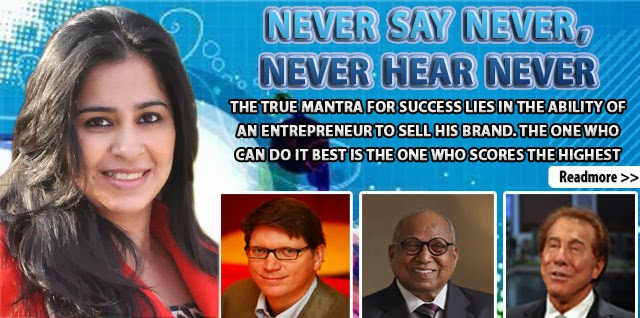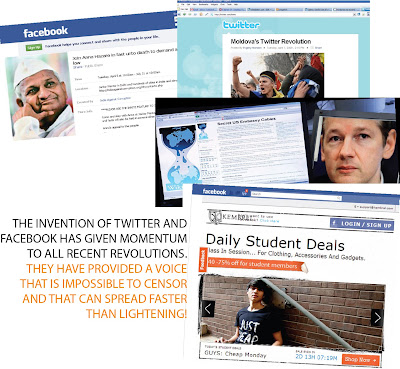go ahead! make some noise
There is simply no alternative to an effective advertising campaign. You may have the best product in the world, but if your advertising campaign falls short, it could all be in vain
A question for you – which company kickstarted the fast moving consumer goods (FMCG) industry in India? If your answer is Hindustan Lever Limited (HLL), I would not blame you. Out of every ten television commercials, HLL accounts for more than half. No wonder, one tends to forget that Dabur was the company that introduced the concept of FMCGs to India. During 1999, HLL spent Rs.7,154 million on advertising, which was 600% higher than what Dabur, the next largest advertiser, had incurred. With thousands of new brands jostling with the old and existing brands for occupying the mind-space, we are in for a brand clutter. And the rule is sparklingly clear – Only the one who tells more (that is, spends more in marketing, advertising and promotion), sells more!
In 2006, HCL completed its 30 years and it realised that – forget the consumers – even its own recruits didn’t know how much the company does. HCL is a dominant IT player; and yet, other players have become more visible than it. It was time for some serious brand building. The company decided to go on a high-decibel advertising spree, spending crores on brand building. As I said earlier – if you spend more, you sell more. The more visible you are, the better your chances of success will be.
It’s highly debatable who is a better candidate for the Presidency of America. Is it Clinton with all her years of experience or is it Obama with his promise of bringing about change in the country, coupled with his youth & charisma. However, at this point in time in the race for the White House, the only factor responsible for the success of any political campaign strategy is ‘Money’!
In the first week of April, for 8 days, Barack Obama spent an average of $400,000 a day on TV ads, totaling to an ad spend of almost $3 million. Hillary Clinton’s campaign was still below $1 million. If Obama continues to spend like this, his chances of wining Pennsylvania are almost sure and this “ad crush” would ensure his Democratic nomination and Hillary’s ouster from the race. Obama is the one with deep pockets and that gives him the power to do more – to recruit more, travel more and most importantly, advertise more.
Once is not enough
Luxor is one of the oldest brands in the country and also a market leader in the writing instruments segment. D. K. Jain, Chairman & President, Luxor says, “We have been the market leader for more than two decades, yet we feel the need for a new campaign, because many tend to forget domestic brands in the face of a host of multinational brands, which are now present in India.” That’s the key factor. Public memory is very shortlived and you need to remind it constantly that you exist.
Barista and Café Coffee Day are in for some serious “brand thinking”. With international chains like UK’s Costa already in and Starbucks gearing to come to India, our own domestic chains are getting cold feet. The biggest problem is most chains still don’t have enough of a national presence, neither do they have enough margins for mass media advertising. They are now going to be pitted against competitors who are coming to India with big reputations and big marketing budgets.
The secret to success is ‘sustenance’. You need to sustain your communication effort over the long term. Just launching a great product is not enough; you need to tell the world about it repeatedly. According to a popular advertising theory, it takes a minimum of nine repetitions before the consumer actually considers your advertisement seriously and wonders if it amounts to anything. By the 13th time, he thinks what you are advertising is a good thing. By the 14th time that he sees the same ad, he remembers he wanted such a thing for a long time. By the 19th time, he counts his money carefully and by the 20th time that he sees the advertisement, he goes and buys the article. Yes, a minimum of 20 repetitions is required before the first purchase. What it is tantamount to is that in today’s marketplace, the one who makes the maximum noise wins. Not just a good product but a large budget too is required. Barista may be as good as Costa or Starbucks, but the one who advertises more will garner more market share.
Learning from the movies
Earlier, producers used to keep aside 10% of the making cost of a film for advertising. Times have changed drastically since then. These days, the major studios have annual advertising budgets that run from Twentieth Century Fox’s $185 million to Disney’s $300 million. Today, marketing a movie costs almost as much as making it.
In 1995, a movie that cost $35 million to produce could cost $30 million to advertise; the definition of advertising itself has changed. It’s no more confined to newspapers, magazines or TV, but also includes T-shirts, caps, comics books, mugs and whatever you can think of. Every movie, mainstream or independent, big or small, needs as much hype as it can get, regardless of its quality.
Last year, SpiderMan-3 was released. Made on a budget of $258 million (making it the most expensive film ever made) and backed by high voltage advertising, it muscled off a better albeit smaller, less grander film London to Brighton out of theaters. Though the story of the latter was more gripping and the lead actress got nominated for many awards, the film, due to its low advertising budget, couldn’t stand up to the might of the Hollywood biggie SpiderMan-3. Back in India a small budget film Mithya was released neck-to-neck with a biggie – Jodhaa Akbar, starring two of India’s most loved heartthrobs Hrithik & Aishwarya. Yet, it was the marketing of Mithya with full page ads in the newspapers that helped it sustain the mighty Jodhaa Akbar and run to packed houses for weeks. Even in movies, the first week run shows a strong relationship between attendance (i.e. ticket sales) and advertising.
The invisible factor
Great advertising may not add new features to your product, but it makes it desirable by changing peoples’ perception about it. It’s the invisible hand that steadily builds the product.
However, many a time, especially when business is not good, our instinct demands that we cut down the advertising budget.
Business cycles come & go and research has proved that those with the determination and courage to maintain and even increase their advertising budgets, no matter what comes their way – recession or boom – are in fact the ones who, in the long run, reap a major sales advantage.
Continuous advertising sustains market leadership and it’s commonsense that maintaining your position is much better than recovering lost ground. So don’t stop advertising when the going gets tough. Remember, during the Great Depression, it was Kellogg that had the guts to increase its spending, and till today, its market leadership remains strong.
Harley Davidson, Nike, Starbucks are some very popular global brands. They have reached “cult” status. If you analyse them carefully, you realise that the one thing that they never compromised on was advertising.
There’s a theory that the more you advertise, the less effective your ads become. When you are new, you create an impact, but as you become familiar, your ads lose their punch. So you cannot have the same budget – you have to increase it to reach out to the consumers; or else, the competitor will overshadow you. No wonder, the very top brands have remained at the top because they have been backed by large, ever-increasing advertising budgets.
Marketing & advertising are matters of great vision & commitment; as the marketplace gets cluttered, these become very expensive commitments and only those who have deep pockets will sustain.
A great product is necessary to make a mark but the one who advertises the most, the one who creates the maximum noise, wins in the long run. So go ahead and be fearless, and go out there with determination, for if you need to win in the market, you need to make some noise...


Comments
Post a Comment